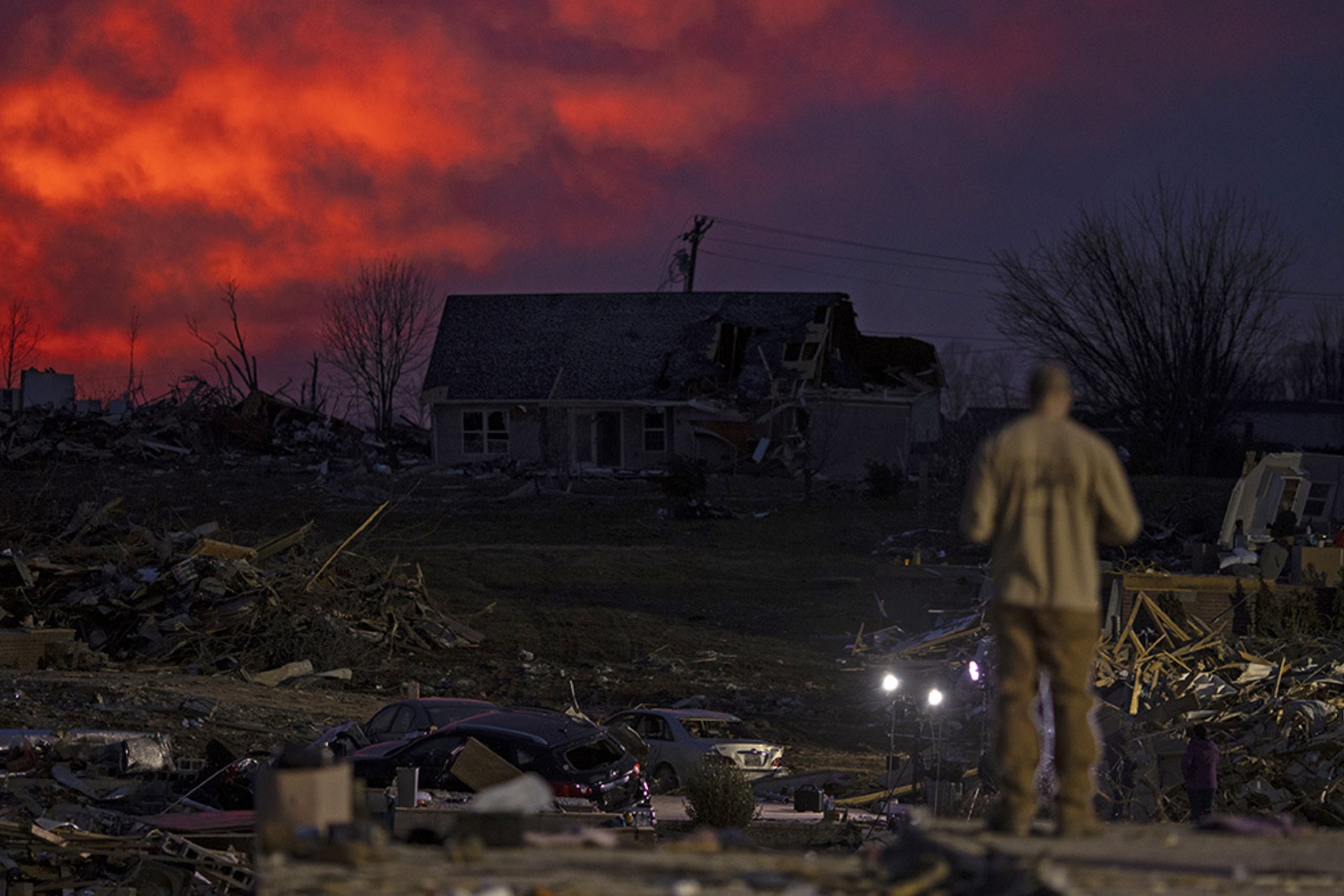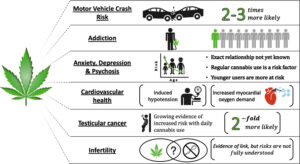Introduction
The U.S. government is often a rapid responder when disasters—such as disease outbreaks, hurricanes, tsunamis, and terrorist attacks—strike at home or abroad. In the United States, the president declares disasters to unlock vital federal resources for state and local governments. At the same time, the United States regularly provides essential support to foreign countries stricken by tragedy. The growing frequency and intensity of disasters, which many link to global warming and human development patterns, pose pressing new challenges for U.S. preparedness and relief efforts.RELATEDReducing Disaster Costs by Building Betterby Alice C. HillDisaster Resilienceby Robert McMahon and Stephen E. FlynnMan-Made Cities and Natural Disasters: The Growing Threatby Stewart M. Patrick
When does the U.S. government respond to disasters?
States and U.S. territories, as well as tribes, typically respond to small-scale disasters and emergencies on their own or with assistance from nearby jurisdictions and volunteer groups. But in cases where the scale of a disaster exceeds local capacity, these authorities can appeal for help from Washington.
What is the declaration process?
Typically, the federal government only comes in once a governor makes a formal request to the White House. These appeals are generally based on a preliminary damage assessment conducted by a team of local, state, and federal officials. Housed within the Department of Homeland Security, the Federal Emergency Management Agency (FEMA) is responsible for coordinating Washington’s response to disasters on U.S. soil.

The president, upon deciding federal aid is warranted, triggers the government’s physical and financial response by issuing either a major disaster or emergency declaration. Alternatively, he may deny a request if he determines the jurisdiction can recover independently, which is not uncommon.
According to the Stafford Act [PDF], the principal law governing federal disaster response, “major disasters” are defined as both natural and man-made events, including “any hurricane, tornado, storm, high water, wind-driven water, tidal wave, tsunami, earthquake, volcanic eruption, landslide, mudslide, snowstorm, or drought.” Additionally, severe fires, floods, and explosions may warrant a designation. This category does not generally include disease outbreaks. However, following the pandemic of a new coronavirus disease in 2020, President Donald J. Trump declared major disasters in all fifty states, an unprecedented move some experts viewed as a distortion of the Stafford Act.
Daily News Brief
A summary of global news developments with CFR analysis delivered to your inbox each morning. Most weekdays.
Email AddressView all newsletters >
An “emergency” is a broader classification for relief efforts, defined as any instance for which the president determines that federal assistance is needed to help “save lives and to protect property and public health and safety, or to lessen or avert the threat of a catastrophe.” Emergency declarations initially unlock up to $5 million in FEMA aid, and the president must notify Congress if spending will exceed this amount. These declarations run the gamut and have included the Flint, Michigan, water crisis; the Boston Marathon bombing; and disease outbreaks.
Emergency declarations are often made in advance of a looming disaster to facilitate evacuations and other protective measures. For example, President Barack Obama issued emergency declarations for nine states and the District of Columbia days before Hurricane Sandy struck the East Coast in 2011; seven of these were reclassified as major disasters after the storm made landfall. Presidents can also declare national emergencies, a step Trump took in response to the coronavirus pandemic.
U.S. assistance for disasters abroad follows a similar blueprint [PDF]. A country’s government typically requests help from a U.S. ambassador or chief of mission, who activates U.S. agencies to provide aid at the president’s discretion. On average, the United States provides relief for dozens of disasters in more than fifty countries every year.
Does the federal government ever take over response efforts?
In most cases, state and local authorities remain in charge of relief efforts after the president declares an emergency or disaster. The federal government chiefly serves as a coordinator and a resource, supplementing state and local response efforts.
However, Washington does take the lead when events fall under exclusive federal jurisdiction. For example, the FBI leads responses to terrorist acts, and federal agencies lead responses to disasters that strike U.S government property, such as national parks and coastal waters[PDF].
Which federal agencies are involved?
In domestic incidents, FEMA works with state and local authorities to marshal a response from multiple federal agencies. FEMA’s ability to organize various assets swiftly is critical, experts say. “In the immediate aftermath of a disaster, you have a limited window to save lives,” says U.S. Coast Guard Captain Michael Trimpert. “FEMA can come in with coordination expertise and set up a command structure that enables that quick and effective response.”
The agencies that participate vary based on the nature of the incident and the needs of the jurisdiction. In assembling an interagency team, FEMA relies on the National Response Framework (NRF) and National Disaster Recovery Framework, which identify the subset of agencies best equipped to respond to a particular challenge. For example, the NRF identifies the U.S. Army Corps of Engineers as the primary agency for emergency infrastructure repair. FEMA can also bring in nongovernmental organizations (NGOs) such as the American Red Cross.
A small number of federal agencies can administer limited disaster relief [PDF] without a presidential declaration, including the Small Business Administration (SBA) and the Departments of Agriculture, Health and Human Services, and Transportation.
Overseas, the U.S. Agency for International Development (USAID) coordinates most federal disaster relief efforts, while the U.S. Department of State takes the lead in assisting refugees affected by disasters. Both agencies work in close partnership with the Department of Defense and other federal agencies, as well as UN agencies, local and donor governments, and NGOs.
What types of assistance do they provide?
Disaster relief falls into three broad categories: preemptive action—consisting of hazard mitigation and emergency preparation—short-term response, and long-term recovery. In the immediate aftermath of a domestic disaster, responders focus on evacuations and providing food, water, shelter, and medical care where needed. The military also plays a critical role in this phase, providing search and rescue and other support.
Thirty to ninety days after a disaster, agencies pivot from response to recovery efforts, working with state and local governments to remove debris and rebuild basic infrastructure. The government generally comes in as an “insurer of last resort,” providing financial assistance to those not covered by private disaster insurance.
“The government generally comes in as an ‘insurer of last resort.’”
Most of FEMA’s financial aid goes to helping affected jurisdictions repair buildings, roads, and other public infrastructure and to provide housing and other crisis services to uninsured or underinsured individuals. Families and individuals may also qualify for tax relief, unemployment compensation, subsidized mental health care, and other aid. For example, the SBA and the Department of Housing and Urban Development (HUD) administer long-term recovery loans. In response to the coronavirus pandemic, the SBA made available $365 billion in disaster-assistance loans.
Federal assistance can extend years beyond the disaster itself. More than fourteen years after Hurricane Katrina crippled New Orleans, the city was still spending FEMA grants.
Abroad, the U.S. government helps to fund the relief efforts of other governments and international organizations and by sending emergency responders and supplies, often transported by the U.S. military. USAID also deploys experts and contractors to help countries craft relief and recovery plans. For example, the U.S. government sent more than fifty experts from the Department of Energy and the Nuclear Regulatory Commission to advise their Japanese counterparts within a week of the Fukushima nuclear meltdown.
How are federal relief efforts funded?
Disaster relief and recovery costs can be enormous. In recent decades, natural disasters have caused trillions of dollars in damages worldwide. In 2019 alone, a combined fourteen disasters cost the U.S. economy $45 billion. The United States’ costliest recorded year for disasters was 2017, when sixteen events caused nearly $320 billion in total damages.
When individuals or companies are found legally responsible for accidents such as oil spills or fires, they bear the cost of relief. For example, oil giant BP and its drilling partners have paid more than $70 billion in clean-up and other costs since the 2010 Deepwater Horizon spill in the Gulf of Mexico.
In the absence of a guilty third party or adequate private insurance, disaster relief costs fall to the government. The U.S. government typically absorbs 75 percent of state and local governments’ recovery costs. If damages are extraordinary, Washington can choose to shoulder a higher portion of costs. When Category-4 Hurricane Harvey left Texas with $125 billion in damages in 2017, President Trump increased the federal cost share of debris removal from 75 to 90 percent. States tend to cover relief costs through agency budgets, disaster accounts, rainy day funds, supplemental appropriations, and redirected government resources. However, the full financial contribution of state and local governments is unknown, as most do not comprehensively track natural disaster spending.
FEMA’s disaster relief fund [PDF] is the primary source of spending for federal domestic relief efforts, which Congress funds through the annual appropriations process. However, Congress is regularly called upon to provide supplemental funds after major disasters strike[PDF]. Days after Hurricane Harvey hit Texas, lawmakers doubled FEMA’s disaster relief budget for 2018. Other federal agencies primarily draw from their own budgets for disaster relief efforts.
USAID and the State Department finance most federal disaster relief abroad. In 2018, USAID’s Office of U.S. Foreign Disaster Assistance delivered more than $1.8 billion [PDF] in humanitarian assistance.
What are some of the biggest challenges?
More disasters. Natural disasters are becoming more frequent and more severe, which many climate experts attribute to global warming. Higher temperatures multiply the number of droughts and heat waves, giving rise to famine and wildfires. Warmer oceans fuel more tropical storms, hurricanes, tornadoes, and blizzards. And as ice sheets and glaciers melt, sea levels rise, leaving coastal populations more vulnerable to flooding. Global disaster damages in recent decades [PDF] have significantly increased.
Human development patterns. As urbanization continues to trend upward, many cities around the globe are increasingly vulnerable to disasters. The United Nations had projected that nearly 70 percent of the world’s people will live in urban centers by 2050, up from 55 percent in 2018. However, the coronavirus pandemic could reverse this trend. Additionally, growing economic interdependence ensures that disasters ripple far beyond their point of impact. For example, Hurricane Harvey forced the temporary closure of one-third of U.S. oil refineries, driving national oil prices to an all-year high.
Logistical challenges. Hurricanes such as Harvey, Katrina, and Sandy have exposed major weaknesses in the ability of public agencies to plan for and respond to disasters. Many analysts believe that even with significant reforms, governments will long struggle with relief efforts that often bring extraordinary logistical and bureaucratic challenges over long time horizons. Federal recovery loans and grants are often insufficient and take months or years to reach victims, and government resources are overwhelmed, particularly during severe or consecutive disasters. For instance, Hurricanes Harvey and Irma depleted FEMA’s emergency supplies weeks before Hurricane Maria made landfall in Puerto Rico, contributing to the agency’s sluggish response. Some experts and policymakers have called for shifting more responsibility to state and local governments.
Insurance shortcomings. For reasons including prohibitively high premiums, misperceptions about risk, and reliance on government relief, the majority of disaster victims are uninsured or underinsured. Roughly one-third of American homeowners in flood-prone cities have flood insurance, and just 13 percent of Californians have earthquake insurance. People without insurance take longer to recover from disasters, and can receive less in FEMA grants than they would in insurance payouts. Closing the U.S. disaster insurance gap can help build national resilience, officials say.
“Every dollar spent on mitigation can save an average of $6 in recovery costs.”
Lack of resilience. Too often, governments and citizens fail to take adequate measures to reduce their vulnerability to common disasters, including by elevating their homes after a storm surge to avoid future flooding or building weather-resistant infrastructure. Resilience building—including hazard mitigation—can be a tough political sell, requiring governments to make long-term investments whose dividends do not follow election cycles. “The system is not prioritizing the pre-disaster investments that would reduce the need for disaster response and recovery,” says Anne Stauffer, a fiscal policy expert at Pew Charitable Trusts. “There is, however, a growing focus in the federal government to incentivize states to invest now to save later.” For example, Congress amended the Stafford Act in February 2018 to reward state and local governments that are prioritizing hazard mitigation. According to the National Institute of Building Sciences, every dollar spent on mitigation can save an average of $6 in recovery costs.
Recommended Resources
The Congressional Research Service outlines FEMA’s public assistance [PDF] and individual assistance [PDF] programs.
The Pew Charitable Trusts explains how states pay for natural disasters.
Alice C. Hill, CFR’s senior fellow for climate change policy, explains how better building can reduce disaster costs.
Stephen Flynn, founding director of Northeastern University’s Global Resilience Institute, suggests ways to incorporate resilience into federal disaster responses.
Carolyn Kousky of the University of Pennsylvania’s Wharton School examines the challenges of disaster insurance.
The Congressional Research Service describes U.S. humanitarian assistance in international crises and disasters.




